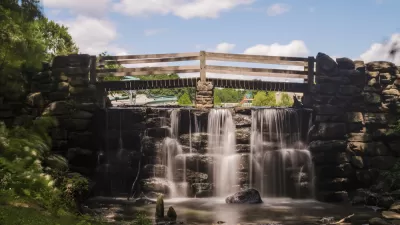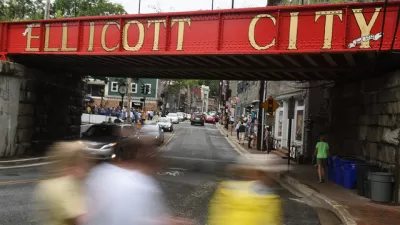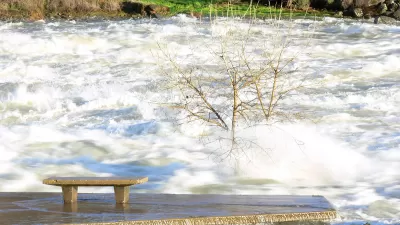The realities of climate change have been on full display in Michigan this summer, and a crusading drain commissioner is pushing for stormwater infrastructure that uses natural features to capture and reuse water during extreme weather.

With memories of massive flooding still fresh from storms this summer, Sarah Grimmer details efforts around the state to increase its stormwater mitigation.
Some in the state are noticing the challenge of stormwater for the first time because the climate in the state is changing. "Since 1986, total annual precipitation across most of Michigan's lower peninsula has increased by more than 10 percent," writes Grimmer.
Now the state and its local and regional planning authorities are facing the challenge of updating its infrastructure—built on old assumptions on how much rain would fall on the state—for the new reality of climate change.
Ingham County Drain Commissioner Patrick Lindemann is cited extensively in the article to describe both the need for new infrastructure, as well as the challenges, like a lack of funding, standing in the way of a more resilient state. Lindemann suggests that instead of simply installing larger drainpipes—a task which many Michigan governments can't afford—a preferable strategy might be to rethink how to handle stormwater altogether.
Instead of funneling excess water in the Great Lakes, Lindemann wants to restore watersheds and create wetlands and ponds. "These projects work to hold rainfall and use it rather than pushing it out," explains Grimmer.
"The drain commissioner's goal is to build around 50 of these projects in Ingham County, he says it will take about 40 to 50 years to get this work done and, in the process, rebuild the county's infrastructure so that it can handle our new environment."
FULL STORY: Massive rainfall events aren't going away in Michigan. Experts say our infrastructure needs to adapt

Planetizen Federal Action Tracker
A weekly monitor of how Trump’s orders and actions are impacting planners and planning in America.

Map: Where Senate Republicans Want to Sell Your Public Lands
For public land advocates, the Senate Republicans’ proposal to sell millions of acres of public land in the West is “the biggest fight of their careers.”

Restaurant Patios Were a Pandemic Win — Why Were They so Hard to Keep?
Social distancing requirements and changes in travel patterns prompted cities to pilot new uses for street and sidewalk space. Then it got complicated.

Platform Pilsner: Vancouver Transit Agency Releases... a Beer?
TransLink will receive a portion of every sale of the four-pack.

Toronto Weighs Cheaper Transit, Parking Hikes for Major Events
Special event rates would take effect during large festivals, sports games and concerts to ‘discourage driving, manage congestion and free up space for transit.”

Berlin to Consider Car-Free Zone Larger Than Manhattan
The area bound by the 22-mile Ringbahn would still allow 12 uses of a private automobile per year per person, and several other exemptions.
Urban Design for Planners 1: Software Tools
This six-course series explores essential urban design concepts using open source software and equips planners with the tools they need to participate fully in the urban design process.
Planning for Universal Design
Learn the tools for implementing Universal Design in planning regulations.
Heyer Gruel & Associates PA
JM Goldson LLC
Custer County Colorado
City of Camden Redevelopment Agency
City of Astoria
Transportation Research & Education Center (TREC) at Portland State University
Camden Redevelopment Agency
City of Claremont
Municipality of Princeton (NJ)





























